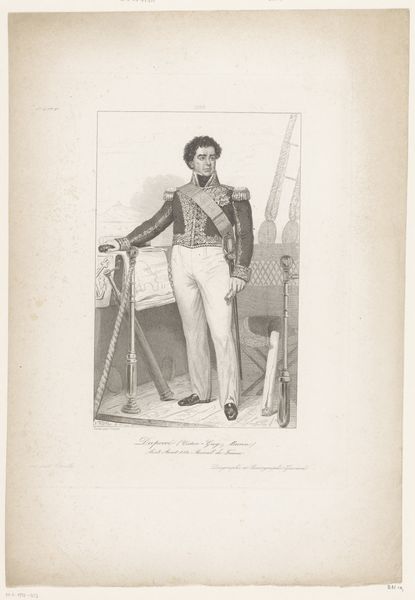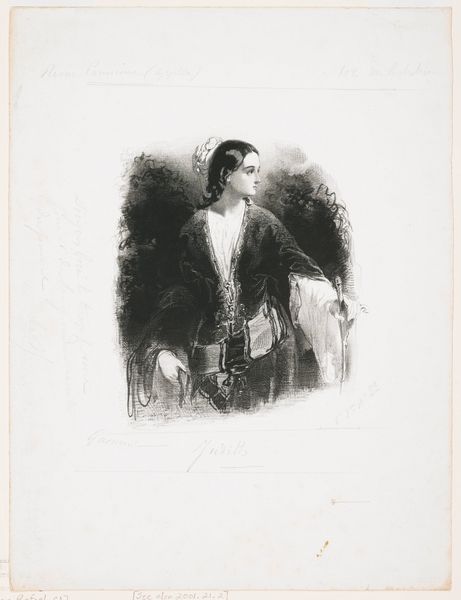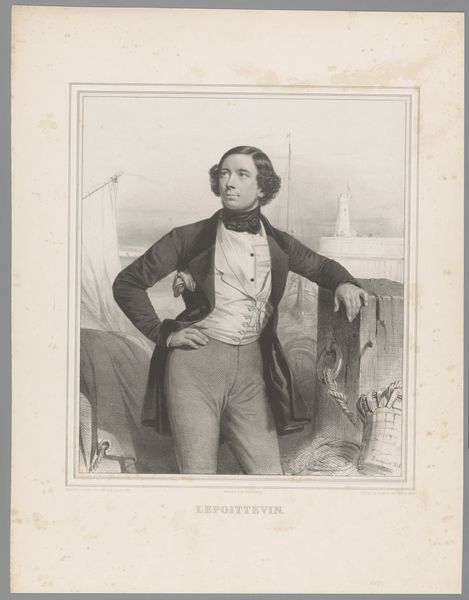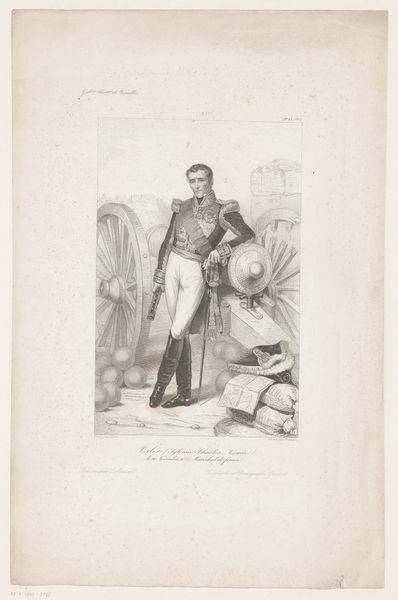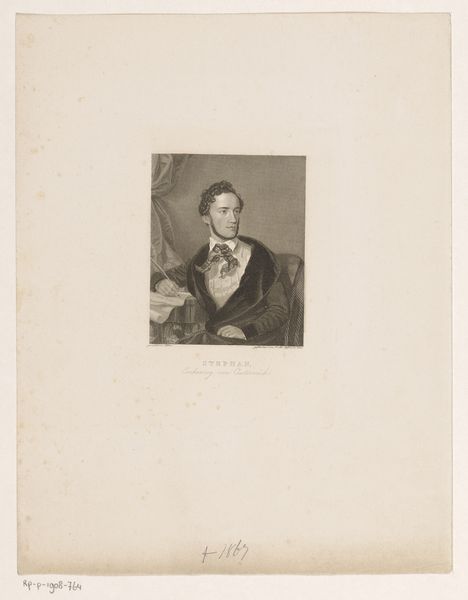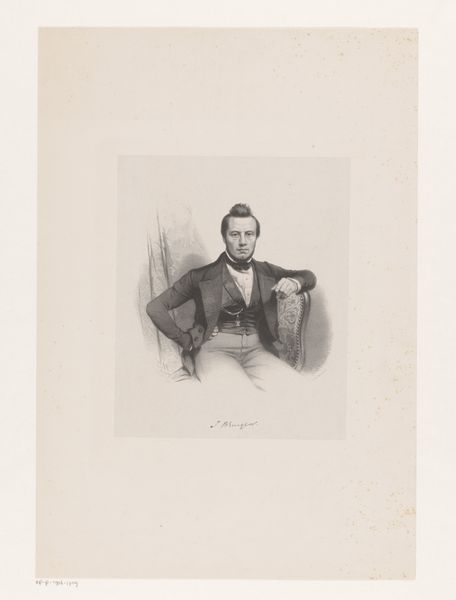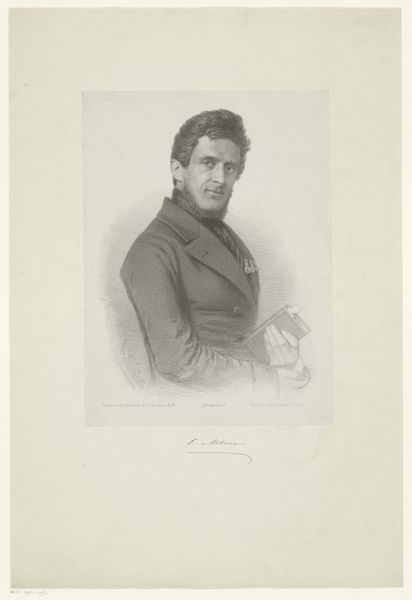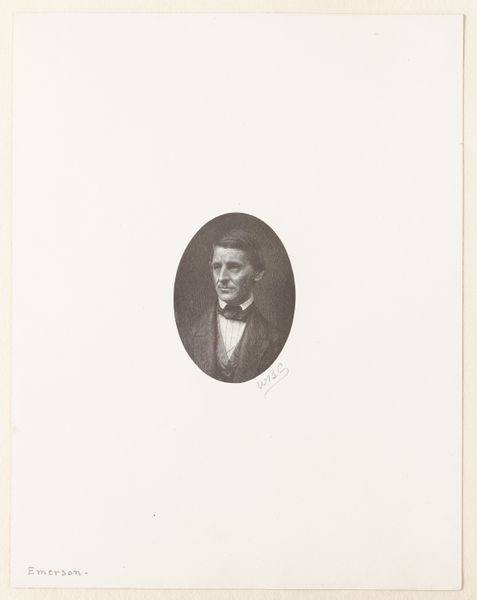
print, engraving
#
portrait
# print
#
old engraving style
#
romanticism
#
19th century
#
engraving
Dimensions: height 550 mm, width 436 mm
Copyright: Rijks Museum: Open Domain
Curator: Welcome! We are standing before Charles Baugniet’s 1838 engraving, "Portret van Pierre Kremer," held here at the Rijksmuseum. Editor: The fine lines give a somber, contemplative air. There's a certain stillness in his gaze and posture, but a sense of inner vibrancy hinted by his gaze, almost melancholic, it's quite arresting. Curator: As an engraving, we need to consider the labor invested. Each line was meticulously etched, implying a painstaking process. These reproductive prints democratized portraiture; a wider audience could consume Kremer's image. We can analyze the availability of printmaking supplies, like the copper plates and acid required, and Baugniet’s training as markers of that society’s support of art. Editor: The artist has placed objects around him. A color palette leans against some bound books – these are obvious painterly signifiers. The palette signals not just artistic vocation but also creativity, emotion. Books too; suggesting both knowledge and cultural importance. Kremer’s upward glance toward the unseen heavens reinforces the image of a Romantic era artist inspired. Curator: And consider the materiality of Kremer's clothing! The frock coat's fabric suggests status, its tailoring signaling bourgeois ideals. The limp bow, barely knotted. This isn’t courtly regalia but the attire of a working professional, someone selling paintings or teaching art to support himself. How did the availability of such fabrics shift social identity and the visibility of these men in 19th century society? Editor: Absolutely. Symbols work in harmony. The distant cathedral spire—aspirational spirituality. Notice how it juxtaposes with Kremer himself; individual ambition set against an ancient spiritual context. It adds layers; beyond the immediate depiction. This is about how we perceive ourselves. Curator: Thinking about mass culture is interesting too. Baugniet was shrewd to make work with widespread commercial viability in burgeoning magazine culture. Print culture altered notions of individual skill versus mass production – it affected how paintings and engravers like him would work as well as impacted the culture and economy overall. Editor: The portrait serves as an emotional time capsule and that reminds us the stories that material goods often omit! This allows for deep examination of history. Curator: Looking at it in its totality, its fascinating and it opens up a range of areas for thinking about materiality, visibility, labor and consumption. Editor: Agreed; revealing layers through symbols helps to uncover meanings for any observer willing to search.
Comments
No comments
Be the first to comment and join the conversation on the ultimate creative platform.

